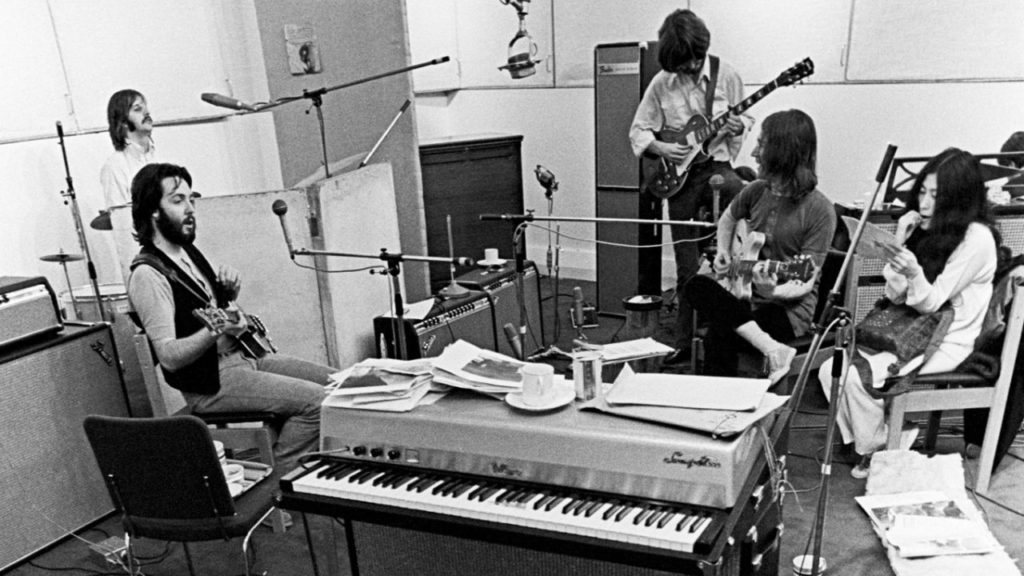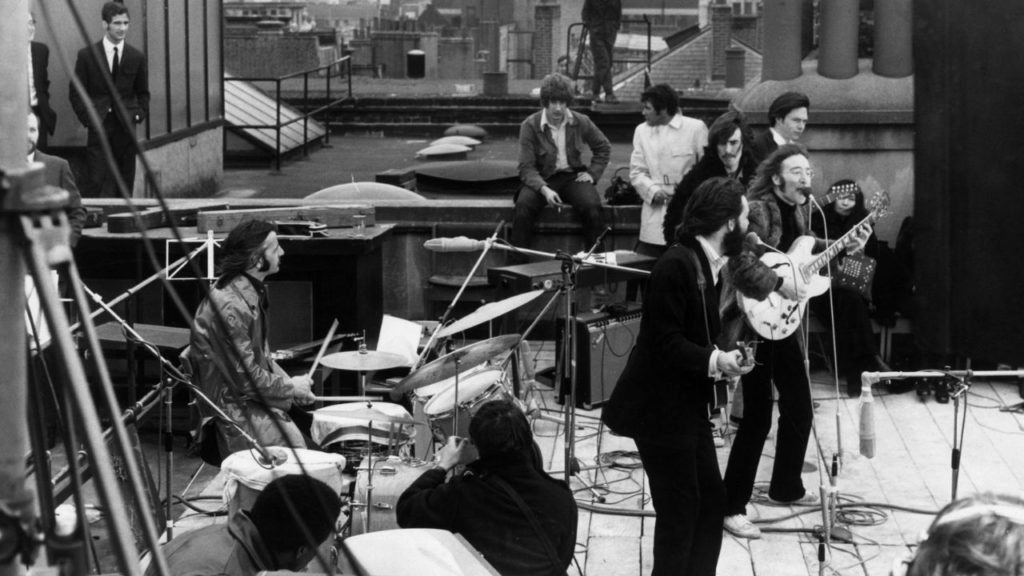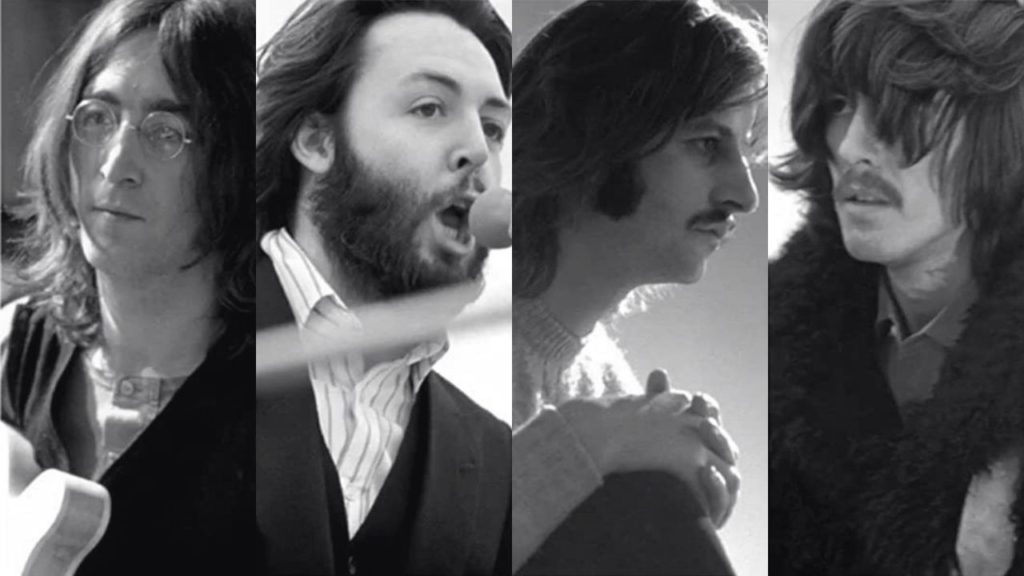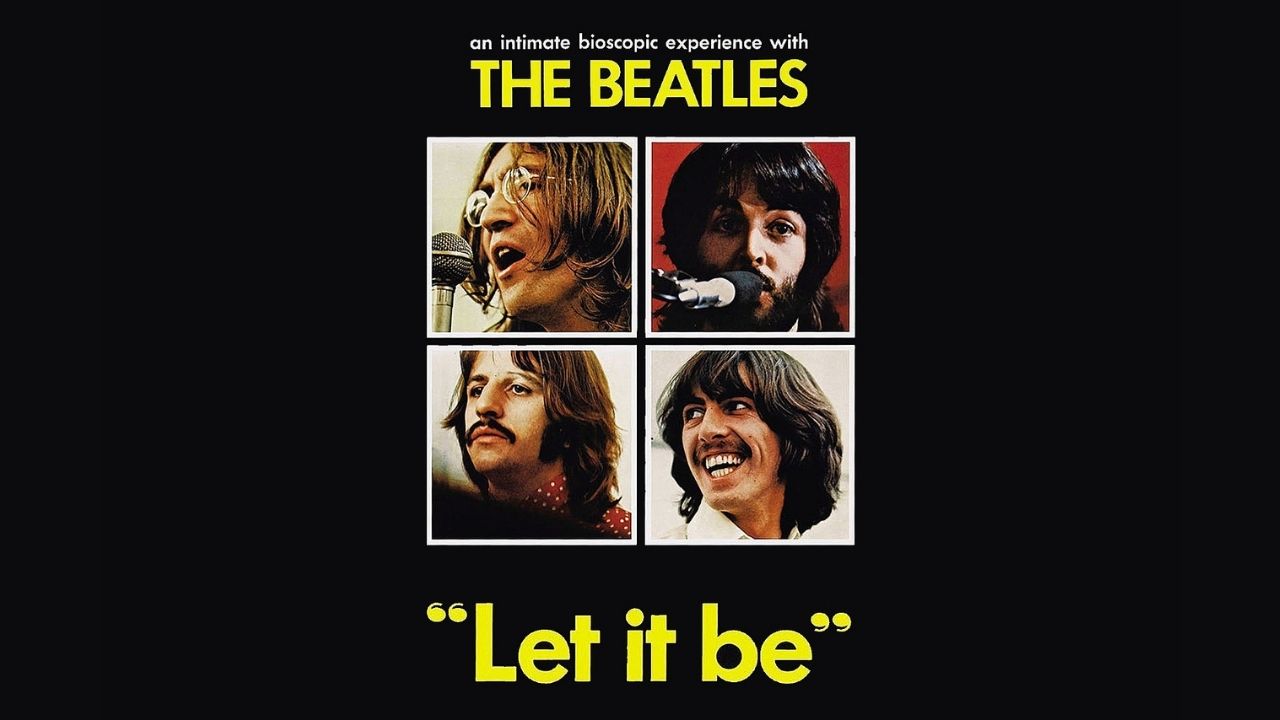Michael Lindsay-Hogg’s Let It Be isn’t quite a concert movie. Released in 1970, about a month after the Beatles had broken up and a week after the album of the same name had come out, it ended up being a eulogy to the most influential band in music history. The documentary, which chronicles the recording of their last album, is a loose, fly-on-the-wall look at their creative process, their tensions, and the subtle intricacies of their relationships. In framing the movie, Lindsay-Hogg chooses to forego any and all narration or context, presenting instead a voyeuristic and intimate look, allowing us to quite literally peek behind the curtain and experience the Beatles as they were.
Let It Be would go on to earn the Beatles an Academy Award for Original Song Score and a Grammy for Original Score, but the movie’s legacy is nevertheless marred by the fact that both Ringo Starr and George Harrison disliked it, and that it took fifty years for Paul McCartney to see it in a different light. After its theatrical release, the documentary was made available on VHS, but never on DVD, Blu-ray, or on any streaming platforms.
All of that is about to change with Peter Jackson’s brand new take on that moment in music history. The Lord of the Rings director has spent the last few years trawling through 55 hours of never-before-seen footage and 140 hours of audio in an attempt to restore, recreate, and reframe those final days when John, Paul, George, and Ringo were still the Beatles. Jackson’s six-hour re-edit, which will stream on Disney Plus Hotstar over three nights on November 25, 26, and 27, will reportedly provide new, positive light on the recording of the Beatles’ final studio album, and reexamine a movie that is widely considered to be a missed opportunity.
But before Jackson’s take becomes definitive, we decided to rewatch Michael Lindsay-Hogg’s original in order to ascertain if it really is as miserable as its reputation suggests.
Sounds of Laughter

Umapagan Ampikaipakan: Being a teenager in Malaysia in the 1990s meant very little access. Which made being a fan of things even harder. Whether it was the Beatles or Star Wars, Spider-Man or The Phantom of the Opera, we got what we got. The occasional magazine or annual. A random comic book that was out of its running order. And, of course, pirated video tapes. We’d take anything and everything we could get our hands on.
Like most of you, I had only ever seen Let It Be on a bootleg VHS. It was part of a five video set (my local pirate in Petaling Street did boxed sets before boxed sets were a thing) of all the Beatles’ movies – A Hard Day’s Night, Help!, Magical Mystery Tour, Yellow Submarine, and Let It Be. The video was muddy. The sound crackled and popped. Some of the scenes jumped. And there was one bit, about 90 seconds at around the 50 minute mark, that I would always have to fast forward past because it was just too fuzzy to watch. Mine was a crappy copy, of a copy, of a copy, but I loved it all the same. God knows it was all I had.
At the time, Let It Be was judged as something miserable. Watching this in the immediate aftermath of the band’s breakup would undoubtedly colour your experience of the movie. An otherwise throwaway glance is suddenly a revealing moment. Every shot of Yoko would be studied for some deeper meaning. A 60 second exchange between Paul McCartney and George Harrison, which might have been nothing more than the everyday creative conflicts that exist within a band, is now taken to suggest some long-brewing and buried tension.
What was supposed to be a celebration of the Beatles and their genius ended up being seen as a somber postscript instead.
For me, Let It Be was the ultimate Beatles movie. It felt real and raw. It felt private. As a fan, this was the closest I would ever get to being in the same room with these men. The movie felt like something that I wasn’t suppose to be watching. I loved the idea of having to strain myself to listen to what they were saying. Of having to lean into the screen to figure out what was going on.
In the 81 minutes he had, Michael Lindsay-Hogg still managed to capture the core elements of who and what the Beatles were at the time. Their loves. Their eccentricities. Their frustrations. But also the joy they found in performing together and in each other.
For me, Let It Be was never quite the obituary that it was made out to be.
A Fool on the Hill

Bahir Yeusuff: I can’t remember when I was first made aware of the Let It Be film but I’m certain it was on one of my early forays into the internet. My Beatles fascination had grown from watching Help! and Hard Day’s Night, from loving their early fun pop stuff, to being an emo teen diving head first into my dad’s record collection and listening to Revolver and Sgt. Pepper and The White Album. So when I heard about this (in my mind at least) mythical film shot during the band’s final recording session, I had to have it.
And so I began reading articles about it.
In my mind, that first viewing of Let It Be was like watching a car crash happen in slow motion. The cause of it being right there in the room with them. There was no warmth between these gods of music. There was no affection between the members of the Beatles. No love between these four friends. It felt like the magic had died. A lot (rightly or wrongly) had already been said about whether or not Yoko Ono was the true cause of their breakup, but watching it, Let It Be made me feel like there certainly was animosity towards her.
Let It Be is a weird film to watch. I hesitate to call it a documentary because it doesn’t feel like any documentary that we’d recognise today. There is no narrator. No talking head interviews. In fact, for most of the 80 minute run time, hardly anyone acknowledges the camera. This feels like a film that could only have been done in the 1970s. A true fly-on-the-wall documentary. Avant-garde.
But here’s the thing. Rewatching it recently, ahead of Peter Jackson’s Get Back, I no longer felt the same. Chalk it up to age, personal growth, or not reading anti-Ono think pieces, Let It Be in 2021 feels nostalgic. It no longer feels like a piece of performance art captured on film. If anything, it feels more like a home movie. Snippets of moments caught in between other moments. All out of context. Just us voyeuristically looking in. The moments between the Beatles that felt cold and distant all those years ago now feel like comfort.
These men, who had met as boys, feel like a group that have come to the ebb of their relationships with each other. It’s not that they hated each other. They didn’t. But they probably didn’t feel the need to show that love so publicly anymore. Like a married couple who have gotten too familiar and comfortable with one another.

And yet. In those 80 or so minutes, there are still moments of magic between them. Moments when they’d light up with laughter and joy as they play music together. Moments when the whole world fades away. My memories of having seen Let It Be all those years ago were coloured with inexperience and the black and white judgement of youth. Rewatching it 20 years later, I come to the film realising that life and relationships are about the greys. And that at the end of it all, these are just four boys from Liverpool playing music in a room.









Follow Us